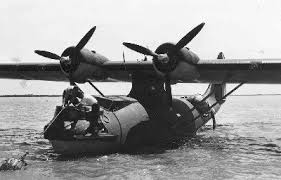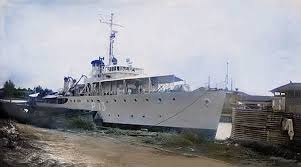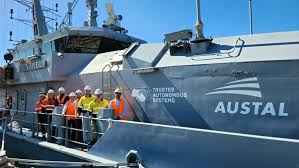
In the early hours of 7 December 1941, Japanese aircraft launched a surprise attack on Pearl Harbor, drawing the United States into the Second World War. Among the many casualties at the nearby Kaneohe Bay Naval Air Station was a lesser-known victim: Dutch Catalina flying boat Y-68, belonging to the Royal Netherlands Naval Air Service (MLD). Though the Netherlands had not yet declared war on Japan, its airmen and aircraft were already woven into the fabric of the Pacific’s crumbling peace.
The destruction of Y-68 is a largely forgotten moment, but one that symbolises the early Dutch commitment to Allied cooperation, and it forms part of a broader story—one that later came to intersect directly with Australia, both strategically and operationally.
A symbol of early Dutch–US military cooperation
Catalina Y-68 was part of a small fleet of Dutch PBY-5 flying boats temporarily stationed in Hawaii. Dutch crews were undergoing training and preparing to ferry the aircraft to the Netherlands East Indies (NEI), where they were desperately needed to support long-range maritime patrols across the archipelago. The loss of Y-68 was significant for the under-resourced Dutch, and marked one of the earliest Allied aircraft losses in the Pacific War.
Although the aircraft itself was not bound for Australia, the mission reflected the growing alignment between Dutch and American forces—an alignment that would soon parallel Australia’s own pivot from Britain to the United States as its principal strategic partner.
Surviving Dutch Catalinas reach Australia
Other Dutch seaplanes in the same group as Y-68 survived the Pearl Harbor attack and eventually made their way to the NEI. Following the fall of the Indies in early 1942, many of these aircraft were relocated to Australia, particularly to Darwin, Broome, and Perth, where they were absorbed into the Allied war effort.
Operating from these northern and western Australian bases, MLD Catalinas conducted reconnaissance patrols, bombing missions, search and rescue flights, and refugee evacuations. Some Dutch seaplanes also took part in evacuating officials, civilians, and military personnel from Java to safety in Australia—often under direct threat of Japanese air attack.
The tragedy of the Broome air raid on 3 March 1942—in which multiple Dutch, American, and Australian flying boats were destroyed and dozens of evacuees were killed—further underscores how deeply entwined the Dutch and Australian wartime experiences became.
A legacy of regional maritime cooperation
From their bases in Australia, Dutch Catalinas contributed to Allied surveillance across the Indian Ocean, Java Sea, and Timor region. Their presence in Australia was not only a tactical necessity, but also a symbol of shared regional defence, with Dutch and Australian air crews often operating side by side.
The early loss of Y-68 at Pearl Harbor thus marks the beginning of a long, often overlooked chapter in which Dutch seaplanes became part of Australia’s frontline defence, and Dutch naval personnel became deeply embedded in the Allied maritime presence in the South West Pacific.
References:
Jack Ford, Allies in a Bind: Australia and the Netherlands East Indies in the Second World War, CQU Press, 2001
R. W. A. van den Berg, Unchained Interests, Netherlands Staff College Monograph, 2021
US Naval archival records on the Kaneohe Bay attack, 1941


